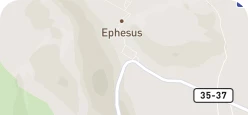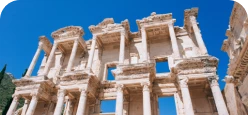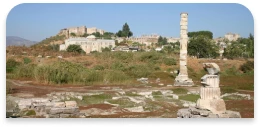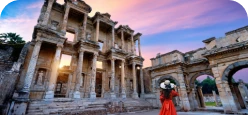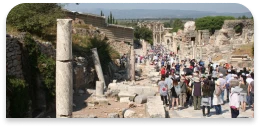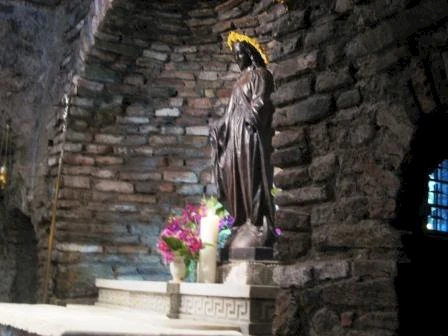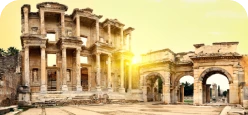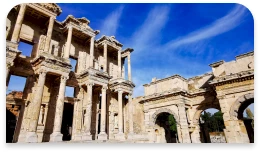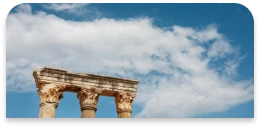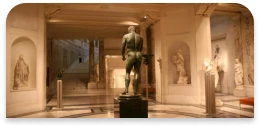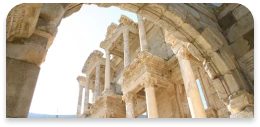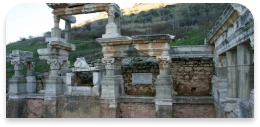Temple of Isis
Ephesus throughout its history always had a large Egyptian population and Isis was a very important Egyptian goddess. She is the wife and sister of Osiris and the mother of Horus. There was a temple of Isis rectangular in shape and in the center of the State Agora. The temple was built during the Hellenistic period when Ephesus had close relations with Alexandria.
Her name literally means "Queen of the throne", which was portrayed by the emblem worn on her head, that of a throne. She is known as being the goddess of magic and healing. Ancient Egyptians believed that the Nile flooded every year because of her tears of sorrow for her dead husband, Osiris. He was killed by her other evil brother, Set, god of chaos and destruction.
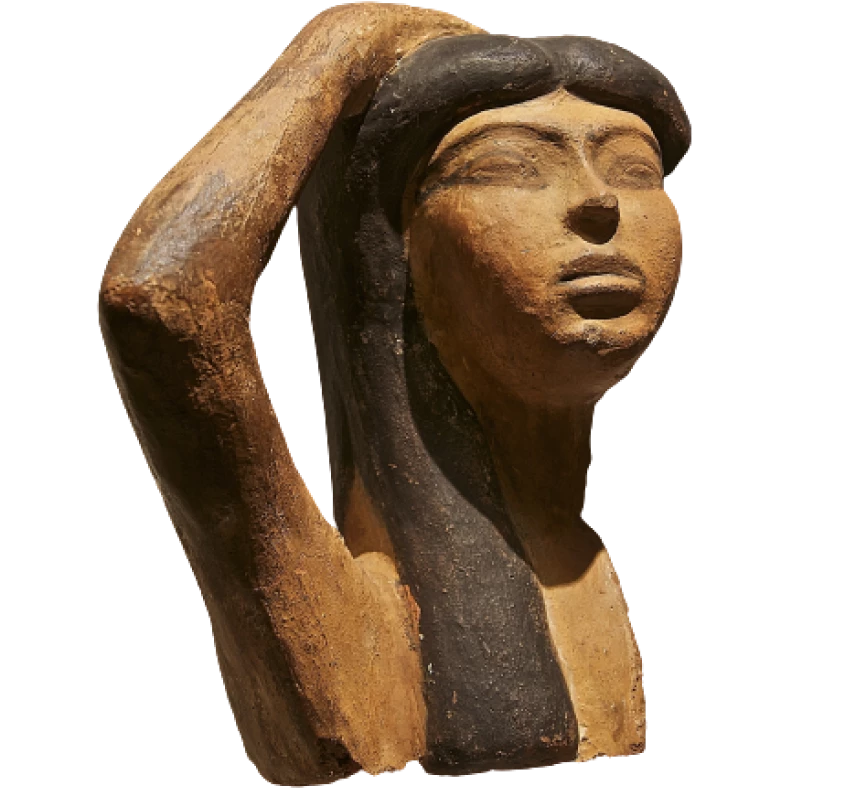
Her origins are uncertain but are believed to have come from the Nile Delta; however, unlike other Egyptian deities, she did not have a centralized cult at any point throughout her worship. First mentions of Isis date back to the Fifth dynasty of Egypt which is when the first literary inscriptions are found, but her cult became prominent late in Egyptian history when it began to absorb the cults of many other goddesses. It eventually spread outside Egypt throughout the Middle East and the Roman Empire, with temples dedicated to her built as far away as the British Isles. Worshipping of her remained in Christian Europe as late as the 6th century.
Isis gave the hope of eternal life or resurrection. In Anatolian religions, this idea gained popularity because there had been no belief in an afterlife before her. Today the name Isis is still a beloved name among modern Coptic Egyptians, and in Europe, the name Isadora is very common.
The Temple of Isis in Ephesus was destroyed during the reign of Emperor Augustus because of Augustus’ hostility towards Anthony and Cleopatra. Some of the parts of this building were used for the construction of The Polio Fountain.
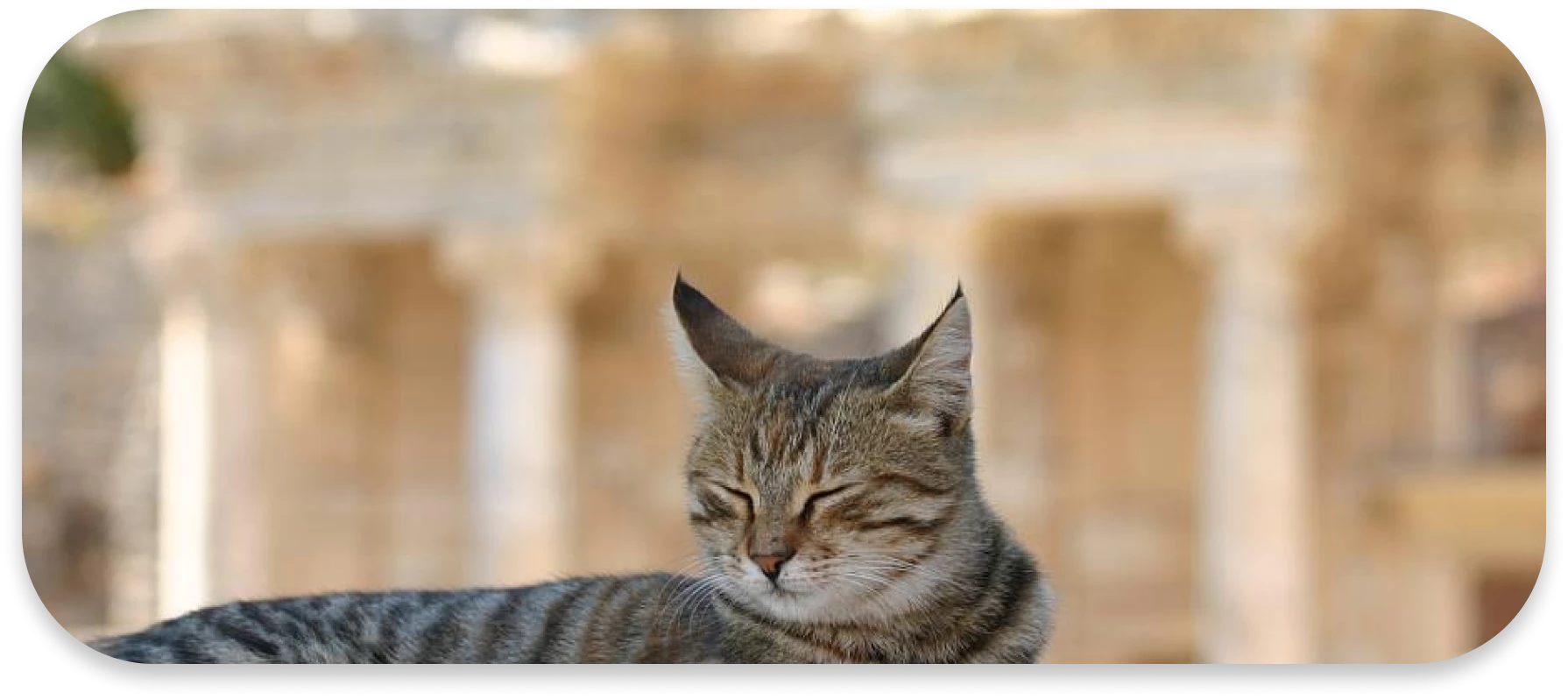
Private Ephesus Tour
%100 satisfaction guarantee

